Identify Your Video Format
VIDEO FORMATS: A BASIC PRIMER
Archival broadcast, industrial, instructional, arts projects, and home movies are often archived on various media formats that span the history of home video, with tapes ranging in size, recording speeds, and recording lengths.
Here’s a simple guide to help identify what the heck is what:
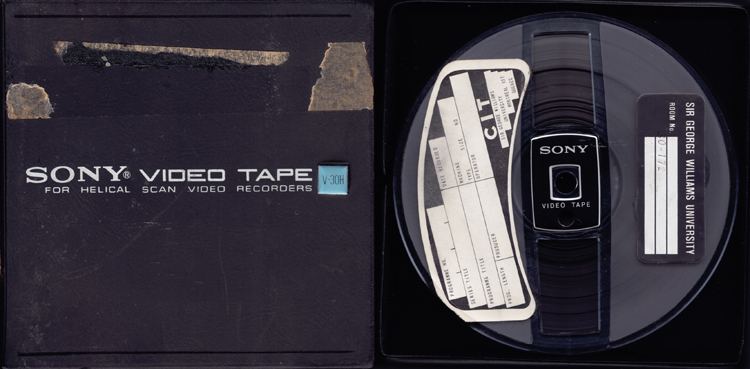
Reel-to-Reel / Open Reel Videotape – like audiotape, before the cassette shell came the open reel format, and when all the major electronics manufacturers (namely Sony, Panasonic, JVC) settled on a single standard (named EIJ-1, after the Electronics Industries Association of Japan) in 1969, open reel videotape became widely used by news organizations, schools, industrial / instructional films, and artist collectives.
There were other manufacturers are unique formats which made use of 1/4″ audiotape-styled reels (Akai being the biggie), but Sony really pushed their 1/2″ videotape format, and many of the primarily B&W tapes still survive, including later colour recordings.
The reel-to-reel system used a separate recorder and video camera, both which remained available as late as 1976, before the format was fully superseded by U-matic in the industrial and broadcast realm, and Betamax in the home video market.

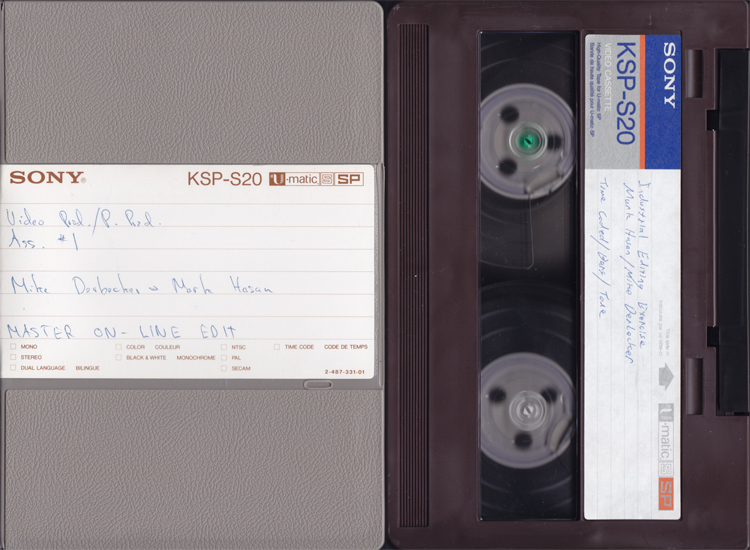
U-matic – Sony’s outrageously solid and reliable 3/4″ videotape system lasted a very long time, from its introduction in 1971 to the 1990s. The cassette tape format similarly required a separate recorder and camera, and went through 3 incarnations: low band in its seminal years; high band; and U-matic SP which offered sharper picture and more vivid colours. For a brief period the format was also used to record early PCM digital audio. U-matic was eventually replaced by Betacam.

Betamax – Sony’s first consumer cassette format debuted in 1975, and the 1/2″ videotape format was popular around the world, and featured three speeds (Beta I, II, and III), with the longest tape capable of holding up to 5 hours of material in Beta III speed (NTSC).
Like U-Matic SP, Sony improved the bandwidth and created SuperBeta in 1985, and the format was similarly used in Sony’s next generation PCM recorder. Betamax also debuted in a separate two-part recorder + camera system before the first Betamax camcorder debuted in 1975.
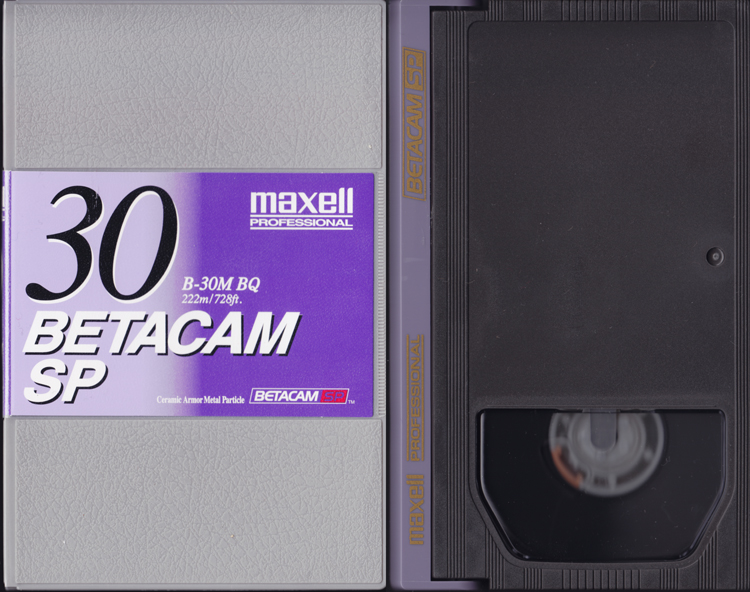
Betacam – possibly Sony’s most impressive and reliable pre-digital format, the professional 1/2″ Betacam system debuted in 1982. Because of its small size for short tapes – identical to the Betamax cassette – it was ideal for location shooting, and the inevitable dockable recorder which created a camcorder.
Like U-matic, Betacam was augmented by Betacam SP in 1986, and later Digital Betacam / DigiBeta (1993), and Betacam SX (1996).

VHS – JVC’s own 1/2″ rival format to Betamax, which debuted in 1976 and ultimately eclipsed the populairy of Sony’s format among the broad consumer base. The battle was less about quality, convenience, and cost to the consumer, and the greater depth of available rental titles duringthe early years of the VHS-Betamax war. VHS tapes were bigger, and similarly had three speeds (SP, LP, and EP / aka SLP) with the longest tape initially holding up to 6 hours of material in EP / SLP. A thinner tape was eventually developed and pushed the capacity of VHS to 8 and later 10.5 hours (NTSC).
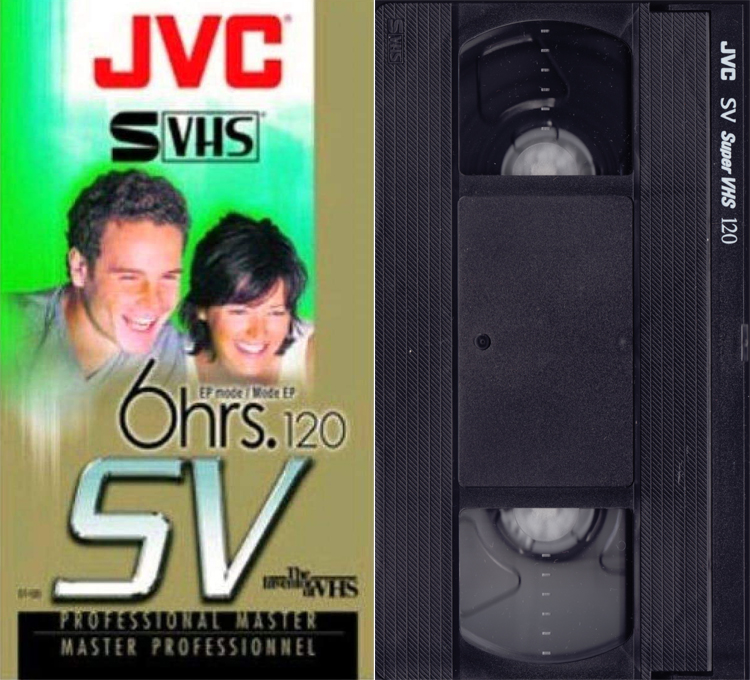
S-VHS – Introduced in 1987, JVC’s prosumer 1/2″ format yielded higher picture and sound quality than VHS, but could only be played on S-VHS players or VHS players with ‘Quasi S-VHS’. The format was widely used for local and sometimes national electronic news gathering (ENG), corporate videos, weddings, by videophiles for archiving, and filmmakers of SOV (shot on video) movies. The tape sizes and speeds are identical to VHS, but are branded S-VHS and at most can hold up to 6 hours of content on the longest-running cassette. Note: VHS tapes could be played in VHS VCRs.

VHS-C and S-VHS-C – as an answer to Sony’s Video 8 format, in 1982 JVC brought out a compact version of its 1/2″ consumer and prosumer formats which was ideal for camcorders. Unlike Video 8, you needed an adapter to play the tapes in conventional VHS and S-VHS VCRs; some were battery powered, others a combination of a pulled lever or coin crank to load the small tape into the larger shell.
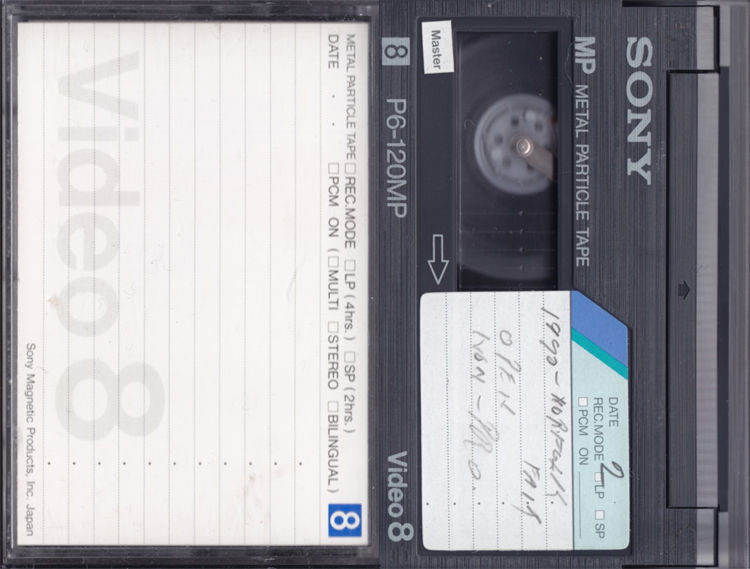
Video 8 – Sony’s attempt (around 1984 / 1985) to replace Betamax and compete against JVC’s VHS-C format with a smaller 8mm tape roughly the size of an audio cassette. The two recording speeds (SP and LP) could yield a maximum of 2 and 4 hours of content, and the format was popular with Sony Handycam users because of its size and portability. Big con: the smaller tape width made it susceptible to nicks and dropouts.
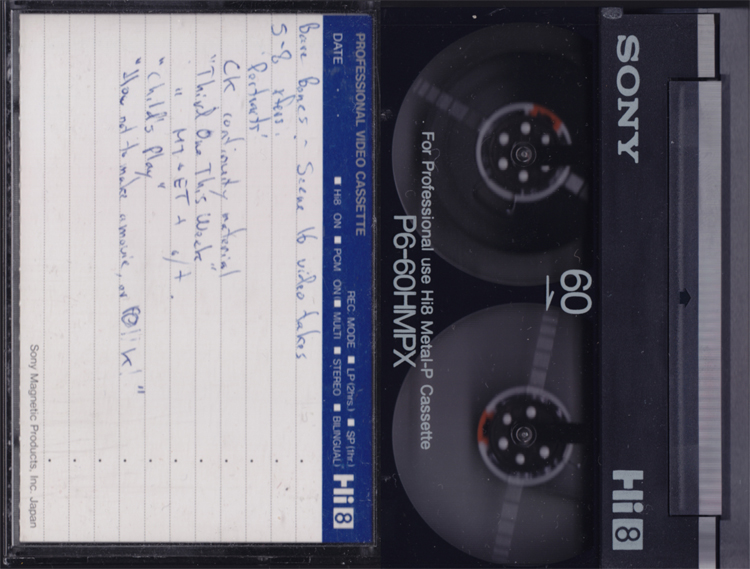
Hi8 – Like JVC’s S-VHS, Sony upgraded their 8mm tape for the same prosumer market (round 1989) with a format more or less equal in quality to S-VHS. The tapes were still plagued by dropouts, but Hi8’s portability and recording capacity made it attractive for ENG and corporate filmmakers. Video 8 tapes will play on Hi8 machines, but not visa versa.
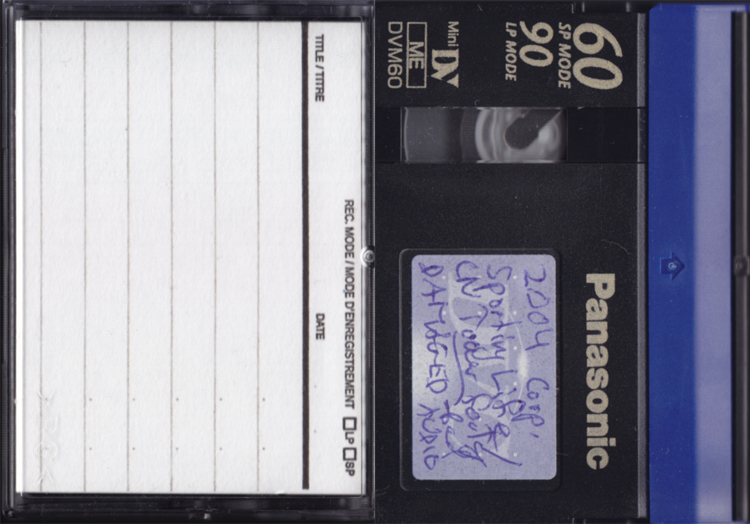
MiniDV – Introduced in 1995, this initially prosumer 1/4″ format a much smaller tape that records digital video in two speeds. A 60 min. tape will yield 60 mins. in SP and 90 mins. in LP, and an 80 mins. tape will yield 120 mins. in LP. However, in a maneuver that perhaps had Sony seeking to blow out Hi8 video stock and make use of existing mechanics, lenses, and camera bodies of its fleet of Hi8 and 8mm stock, in 1999, the existing gear was adapted for Digital8.
Physically, high-end prosumer cameras like the VX-3 (Hi8) and the DCR-VX1000 (miniDV) were very similar – both are 3 CCD cameras offering incredibly crisp images – but these upper-tier models were the exception, as Digital8 made use of models which used similar tape loading mechanisms and overal designs as Sony’s hi8 fleet.
When using Hi8 videotape in Digital8 cameras, users could record 80 mins. of video in SP and 120 mins. in LP. Hi8’s longer and bigger tape was preferred by some videophiles, and although its quality is identical to miniDV, a Digital8 recording cannot be played on a Hi8 or Video 8 camera / VCR. Similarly, professional variants of DV – Sony’s DVCAM, Panasonic’s DVCPRO, DVC PRO-50, DVCPRO-P, and DVC-HD – cannot be played on consumer miniDV gear.
